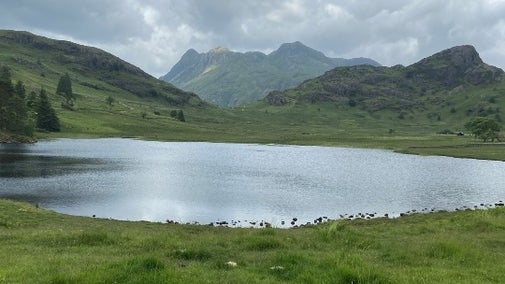Mickleden Valley trail
Lake District
Walk into the wilds of Mickleden, a Langdale valley where clues to Neolithic and Norse settlers lie beneath dramatic views of pikes and crags. This easy out-and-back route follows the bridleway along the valley floor, on a section of the Cumbria Way.
Near to
The LangdalesStart point
Old Dungeon Ghyll National Trust car park, grid ref: NY286061Trail information
Stony terrain
The track is easy to follow but stony in places. Wear sturdy footwear suitable for the weather conditions.
More near here
Stickle Tarn trail
Take on a challenging and rewarding walk up Stickle Ghyll to the tarn above, surrounded by high fells, waterfalls and rockpools.

Blea Tarn trail
Surround yourself with views of the Langdale Pikes and other Lake District fells, without the tough climb, as you explore tranquil Blea Tarn on this easy, well-made trail.

High Close tree trail
A 1.2-mile walk around the High Close estate that takes in many of the rare and endangered conifer trees planted here by Edward Wheatley-Balme during the 19th century.

Langdale Valley cycle trail
Take a 11-mile cycle trail through Langdale Valley with views and opportunities to stop for refreshments along the way.

Get in touch
Great Langdale, near Ambleside, Cumbria, LA22 9JU
Our partners

We’ve partnered with Cotswold Outdoor to help everyone make the most of their time outdoors in the places we care for.
You might also be interested in
Walking
Explore some of the finest landscapes in our care on coastal paths, accessible trails, woodland walks and everything in between. Find the best places to walk near you.

Walking in the Lake District
From gentle ambles to more challenging hikes, these are some of the best walks to explore the heart of the Lake District.

Cotswold Outdoor: our exclusive walking partner
Learn about the National Trust’s ongoing partnership with Cotswold Outdoor. Find out how they help us care for precious places and the exclusive discount available for National Trust supporters.

Staying safe at National Trust places
The special places in National Trust care sometimes come with a few risks for visitors, be it coastline or countryside. Find out how to keep safe throughout your visits.

Follow the Countryside Code
Help to look after National Trust places by observing a few simple guidelines during your visit and following the Countryside Code.

Things to do in the Langdales
Head to the Langdales for stunning walking and cycling trails and discover rare trees and shrubs from around the world at High Close Estate and Arboretum.





